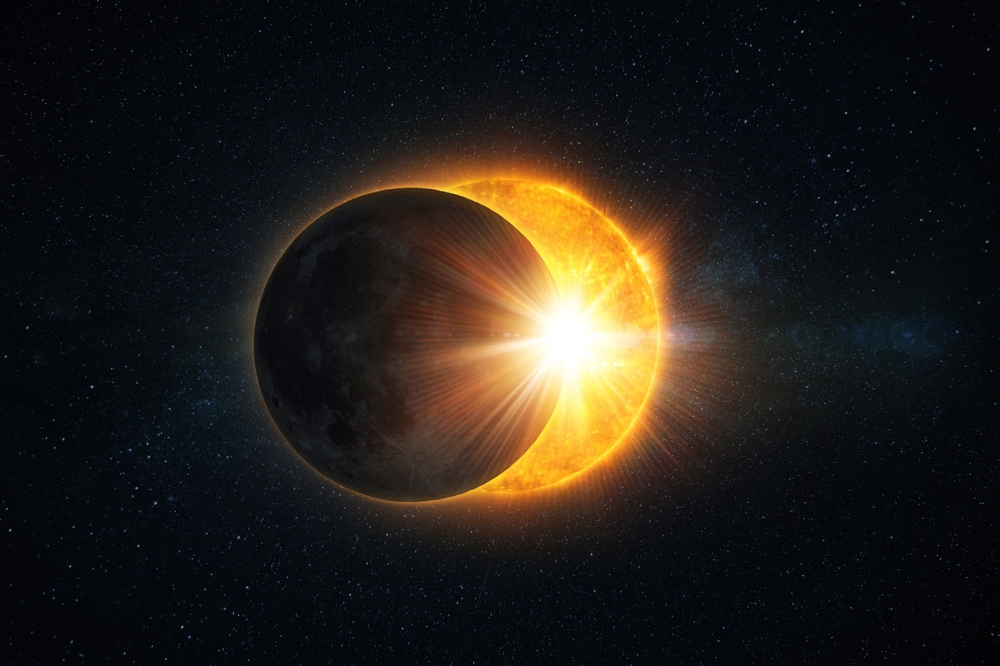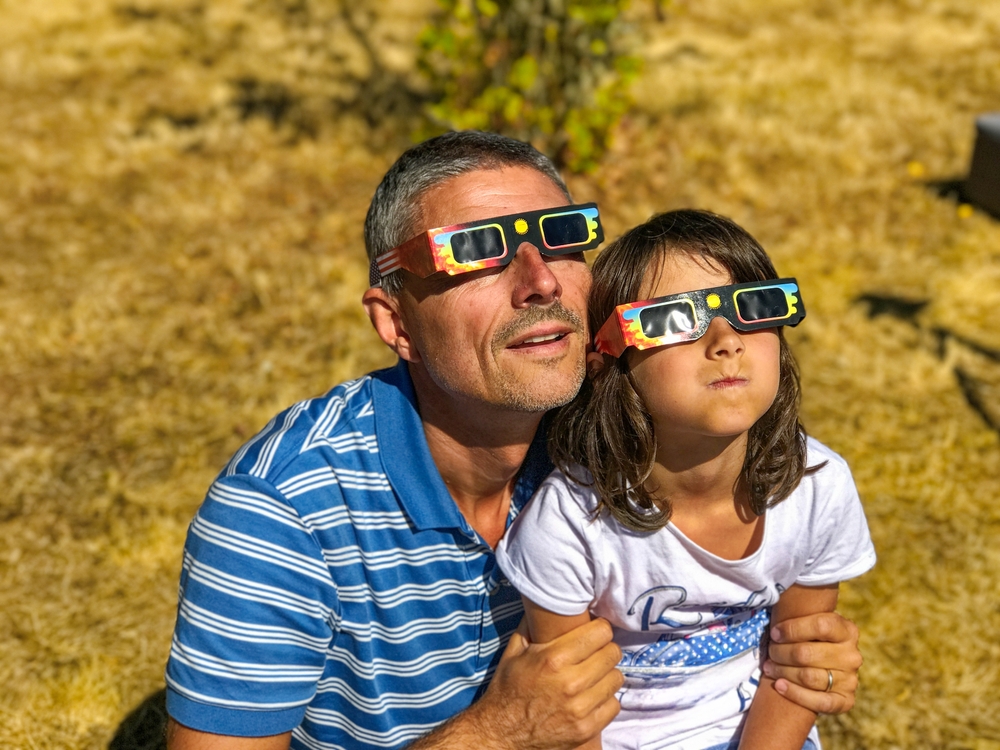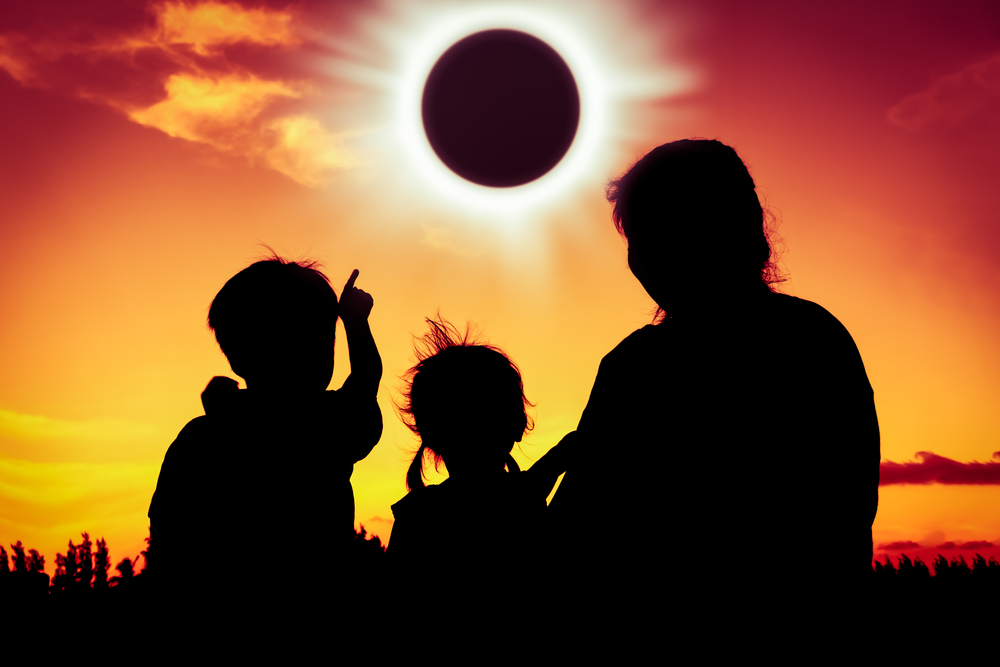Solar eclipses are rare phenomena in which the moon crosses the sun’s path, temporarily turning day into night. Today, we will explore what a solar eclipse is, how it happens, and its spiritual significance and superstitious beliefs.
Jump to:
- What is a Solar Eclipse?
- How Long Does a Solar Eclipse Last?
- Types of Solar Eclipses
- How Often Do Solar Eclipses Happen?
- The Next Solar Eclipse
- Spiritual Significance of Solar Eclipses
- Ancient Beliefs and Interpretations
- Superstitious Beliefs About Solar Eclipses
- Solar Eclipse Timeline
- Frequently Asked Questions About Solar Eclipses
What is a Solar Eclipse?

A solar eclipse occurs when the Moon moves between the Earth and the Sun, blocking out the Sun's light either partially or completely. This can only happen during a new moon when the Sun, Moon, and Earth are aligned in a straight line. The result is a breathtaking display where the Moon casts a shadow on the Earth.
How Long Does a Solar Eclipse Last?
The duration of a solar eclipse can vary depending on the type of eclipse and your location. Totality, the period when the Sun is completely covered by the Moon, typically lasts only a few minutes, with the longest possible duration being about 7.5 minutes. The entire event, from the beginning to the end of the partial phases, can last several hours.
Partial and Annular Eclipse Duration
Partial and annular eclipses also last for several hours, but the period of maximum coverage (when the Sun is most obscured) is shorter than totality in a total eclipse.
Recommended for you!
Best SellersTypes of Solar Eclipses
There are several types of solar eclipses, each offering a unique celestial display. The main types are total, partial, and annular, with a special mention of the hybrid eclipse. Each type depends on the alignment and distance between the Earth, Moon, and Sun.
1. Total Solar Eclipse
A total solar eclipse is a spectacular event where the Moon completely covers the Sun, creating a dramatic moment of darkness known as totality. During totality, the day turns into night for a few minutes, and the Sun's outer atmosphere, the corona, becomes visible as a glowing halo of plasma. This rare phenomenon offers a breathtaking sight and a unique opportunity for scientific observation. The last total solar eclipse visible in the UK occurred in 1999, and the next one is eagerly anticipated, set to occur on 23rd September 2090.
2. Partial Solar Eclipse
In a partial solar eclipse, only a portion of the Sun is obscured by the Moon. This means that the Sun is never completely covered, and the degree of coverage varies depending on your location on Earth. The Sun appears as if a bite has been taken out of it. Partial eclipses are more common than total eclipses and can be seen from a wider area. They provide an excellent opportunity for casual observers to experience the beauty of an eclipse without travelling long distances.
3. Annular Solar Eclipse
An annular solar eclipse occurs when the Moon is too far from the Earth to completely cover the Sun. Because the Moon appears smaller than the Sun in the sky, it leaves a ring of sunlight visible around its edges, often referred to as a "ring of fire." This type of eclipse is particularly striking and differs from a total eclipse in that it never achieves total darkness. Annular eclipses also require precise alignment and can be predicted using astronomical calculations.
4. Hybrid Solar Eclipse
A hybrid solar eclipse, also known as an annular-total eclipse, is a rare and fascinating type that shifts between a total and an annular eclipse along its path. Depending on the observer's location, the eclipse may appear as a total eclipse at some points and an annular eclipse at others. This transition happens because of the curvature of the Earth's surface and the varying distances between the Earth, Moon, and Sun. Hybrid eclipses are less common than other types and offer a unique experience for observers.
How Often Do Solar Eclipses Happen?
Solar eclipses are relatively rare events. They occur at least twice a year, but a total solar eclipse at any given location is much less frequent. On average, a total solar eclipse happens somewhere on Earth every 18 months. However, a specific location might only experience a total eclipse once every 375 years!
When Do Solar Eclipses Occur?
Solar eclipses can only occur during a new moon phase when the Sun and Moon are aligned with the Earth. The timing of these events is predictable, allowing astronomers to create a timeline of future eclipses.
The Next Solar Eclipse

If you are wondering when you can witness the next solar eclipse, you are in luck. Solar eclipses are predictable, and many resources are available to help you plan your viewing.
Upcoming Solar Eclipses
The next total solar eclipse visible in the UK will occur on 23rd September 2090. While this is a long wait, there are other partial and annular eclipses to look forward to in the meantime.
Globally, the next total solar eclipse will be on 12th August 2026, visible across Greenland, Iceland, and Spain.
Spiritual Significance of Solar Eclipses
Throughout history, solar eclipses have held significant spiritual meaning for various cultures. Many ancient societies viewed them as omens or messages from the gods.
Ancient Beliefs and Interpretations
In ancient times, solar eclipses were often seen as bad omens. For instance, the ancient Greeks believed that a solar eclipse was a sign of impending disaster. Similarly, the Chinese thought that a celestial dragon devoured the Sun during an eclipse.
Modern Spiritual Perspectives
Today, some people still hold spiritual beliefs about solar eclipses. Many see them as times for reflection, change, and new beginnings. The temporary darkening of the Sun is often interpreted as a symbol of transformation and renewal.
Superstitious Beliefs About Solar Eclipses
Solar eclipses have also been surrounded by numerous superstitions. While many of these beliefs have been debunked by science, they remain a fascinating part of cultural history.
- Pregnancy: Some cultures believe that pregnant women should stay indoors during a solar eclipse to protect their unborn children from harm.
- Food and Water: It was once thought that food and water could become contaminated during an eclipse, leading people to avoid eating or drinking.
- Personal Safety: Some superstitions warned that looking directly at an eclipse could cause blindness or other ailments.
Scientific Explanation
Science tells us that solar eclipses are natural and harmless events. The only real danger is looking directly at the Sun without proper eye protection, which can cause serious eye damage.
Solar Eclipse Timeline

- 1919 Solar Eclipse: Observed on 29th May 1919, this eclipse is famous for its role in confirming Einstein's theory of general relativity. Sir Arthur Eddington conducted experiments during this eclipse that showed the bending of light around the Sun.
- 1999 Solar Eclipse: The last total solar eclipse visible in the UK occurred on 11th August 1999. It was a momentous event, with many people travelling to see it.
- 2017 Solar Eclipse: Known as the "Great American Eclipse," it occurred on 21st August 2017. This total solar eclipse was visible across the continental United States, attracting millions of viewers and scientists.
- 2021 Annular Solar Eclipse: Occurring on 10th June 2021, this annular eclipse was visible from parts of Canada, Greenland, and Russia. Observers saw the striking "ring of fire" effect as the Moon covered the centre of the Sun.
- 2024 Solar Eclipse: Occurring on 8th April 2024, the 2024 solar eclipse was visible across parts of North America. This spectacular event was highly anticipated by eclipse enthusiasts and astronomers.
- 2090 Solar Eclipse: The next total solar eclipse visible in the UK will happen on 23rd September 2090. This future eclipse is already generating excitement and interest among astronomers and the public.
Frequently Asked Questions About Solar Eclipses
How does a solar eclipse occur?
A solar eclipse occurs when the Moon moves directly between the Earth and the Sun, casting a shadow on the Earth's surface. This can only happen during a new moon when the Sun, Moon, and Earth are in alignment.
How long does a solar eclipse last?
The entire event of a solar eclipse, from start to finish, can last several hours. However, the period of totality, when the Sun is completely covered by the Moon, usually lasts only a few minutes. The maximum duration of totality can be about 7.5 minutes.
Can you look directly at a solar eclipse?
It’s dangerous to look directly at a solar eclipse without proper eye protection, as the Sun's rays can damage your eyes. Special solar viewing glasses or eclipse glasses are required to watch an eclipse safely.
What is the difference between a solar eclipse and a lunar eclipse?
A solar eclipse occurs when the Moon passes between the Earth and the Sun, blocking out the Sun's light. A lunar eclipse happens when the Earth comes between the Sun and the Moon, casting a shadow on the Moon.
Why do solar eclipses only happen during a new moon?
Solar eclipses only happen during a new moon, as that’s the phase when the Moon is positioned between the Earth and the Sun. For an eclipse to occur, the Sun, Moon, and Earth must be aligned in a straight line.
Why are solar eclipses rare?
Solar eclipses are rare because the alignment required for them to occur is specific and precise. The Moon's orbit around the Earth is tilted relative to the Earth's orbit around the Sun, so the three bodies only align perfectly a few times each year.
Where can I see the next solar eclipse?
The visibility of a solar eclipse depends on your location. For instance, the next total solar eclipse visible in the UK will occur on 23rd September 2090. However, there are partial and annular eclipses that may be visible sooner. Check astronomical resources for detailed maps and dates of upcoming eclipses.
How do scientists predict solar eclipses?
Scientists predict solar eclipses using complex calculations that consider the orbits of the Earth and Moon. These calculations allow them to create accurate timelines and maps of future eclipses.
Are there any health benefits to solar eclipses?
There are no direct health benefits to solar eclipses. However, witnessing a solar eclipse can have a special psychological impact, fostering a sense of wonder and connection to the universe.
What equipment do I need to observe a solar eclipse safely?
To observe a solar eclipse safely, you need special solar viewing glasses or eclipse glasses. Alternatively, you can use a pinhole projector to project the image of the eclipse onto a surface.
Can solar eclipses affect animals?
Solar eclipses can affect animals. Many animals may behave as if it is dusk during the period of totality, becoming quiet and settling down as they would at night. When the eclipse passes, they return to their normal activities.
How do I take photos of a solar eclipse?
To take photos of a solar eclipse, you need a camera with a solar filter to protect the lens and sensor. It is also recommended to use a tripod to keep your camera steady and to use a remote shutter release to avoid shaking the camera. Make sure to never look directly through the camera viewfinder without proper solar filters.
What is the "path of totality"?
The "path of totality" is the narrow path on the Earth's surface where a total solar eclipse is visible. Outside this path, observers will only see a partial eclipse. The path of totality can be several thousand kilometres long but only about 160 kilometres wide.
How do ancient cultures interpret solar eclipses?
Ancient cultures often interpreted solar eclipses as omens or messages from the gods. For example, the ancient Chinese believed that a dragon was devouring the Sun, while the Vikings thought that wolves were chasing the Sun and Moon.
Can solar eclipses be seen from space?
Solar eclipses can be seen from space. Astronauts on the International Space Station (ISS) can observe solar eclipses as they pass over the Earth's shadow. These observations provide unique perspectives and valuable scientific data.
How often do solar eclipses happen?
Solar eclipses occur at least twice a year somewhere on Earth. However, any specific location on Earth may only experience a total solar eclipse once every 375 years on average.
Recommended for you!
Best SellersStudy Astronomy With Centre of Excellence
If you’re fascinated by solar eclipses and want to learn more, we offer a fascinating Astronomy Diploma Course and other Earth Sciences courses to expand your knowledge. You can access these courses at a special discounted price of £29, saving you over £100!













